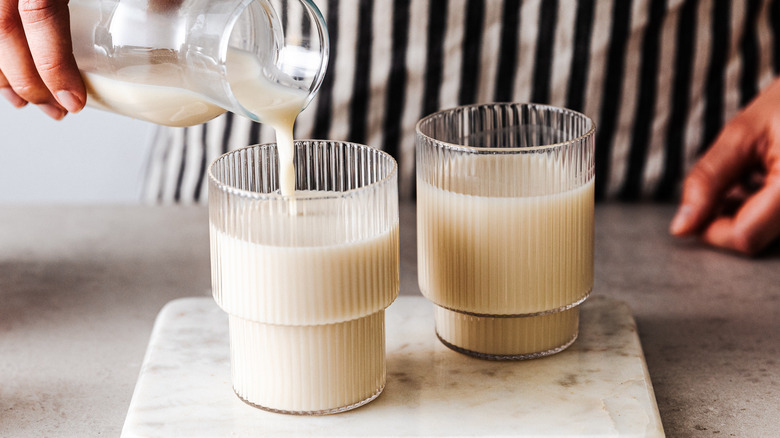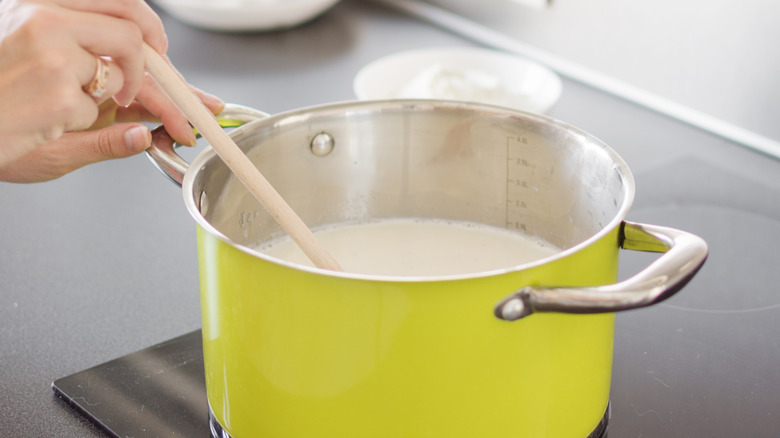What Is Baked Milk And What Does It Taste Like?
Since humans discovered they could consume the milk of the animals they domesticate, it has become a key source of sustenance, nutrition, and culinary creativity. Cultures around the world have come up with numerous adaptations of milk to create the vast array of delicious dairy products we have today. While dairy sections in the U.S. contain butter, cheese, milk, and yogurt, baked milk is a ubiquitous staple in Russia and former Soviet countries.
Known as "ryazhenka" in Russian, baked milk is a fermented drink with a creamy consistency, tan hue, and caramelized flavor that's comparable to condensed milk. It can be baked in the oven or simmered on the stove at low temperatures for anywhere from 4 to 8 hours. Baking the milk thickens it and caramelizes its color and flavor. Once cooled, baked milk undergoes fermentation by adding a spoonful of sour cream, kefir, or buttermilk followed by another waiting period of 10 to 12 hours.
Despite the fermentation process, ryazhenka doesn't taste as sour as plain yogurt or kefir; it's mild and creamy with subtly sweet caramelized notes. However, its sourness depends on the type of fermented culture you add; kefir will impart a tart aftertaste, but not sour cream. Baked milk is an easy homemade recipe, but it's also sold as a bottled refrigerated product. Today, it's especially popular for children, with a creamy richness akin to yogurt drinks that makes it a comforting snack to enjoy with a thick slice of sweet bread.
Baked milk's history is rooted in preservation
Baked milk's origin story is rooted in the waste-not-want-not mentality of traditional Russian households. If families had more milk than they could drink within its short lifespan of freshness, baking the milk for hours would extend its shelf life for up to a week.
Fermentation alters the chemical composition of baked milk, reducing the content of lactose and allergic reactions to casein, making baked milk a nutritious and safe product for lactose and casein-intolerant diets. While refrigeration and pasteurization have eliminated the need for baked milk as a means of preservation, it has remained a beloved staple in Russia, Ukraine, and Belarus due to its unique flavor and nutrient profile. It's a safe and simple recipe to make at home that will stay good unrefrigerated for nearly two days. Furthermore, if you're making baked milk at home, you can enjoy the thickened caramelized milk hot out of the oven without fermenting it.
Modern recipes call for the use of ovens or slow cookers and give you the option to use other types of cultured milk products like buttermilk or kefir. While it's popular as a stand alone drink for children, adults drink it as a mix-in for coffee and tea, add it to porridge, or incorporate it into omelet and pancake batters.

